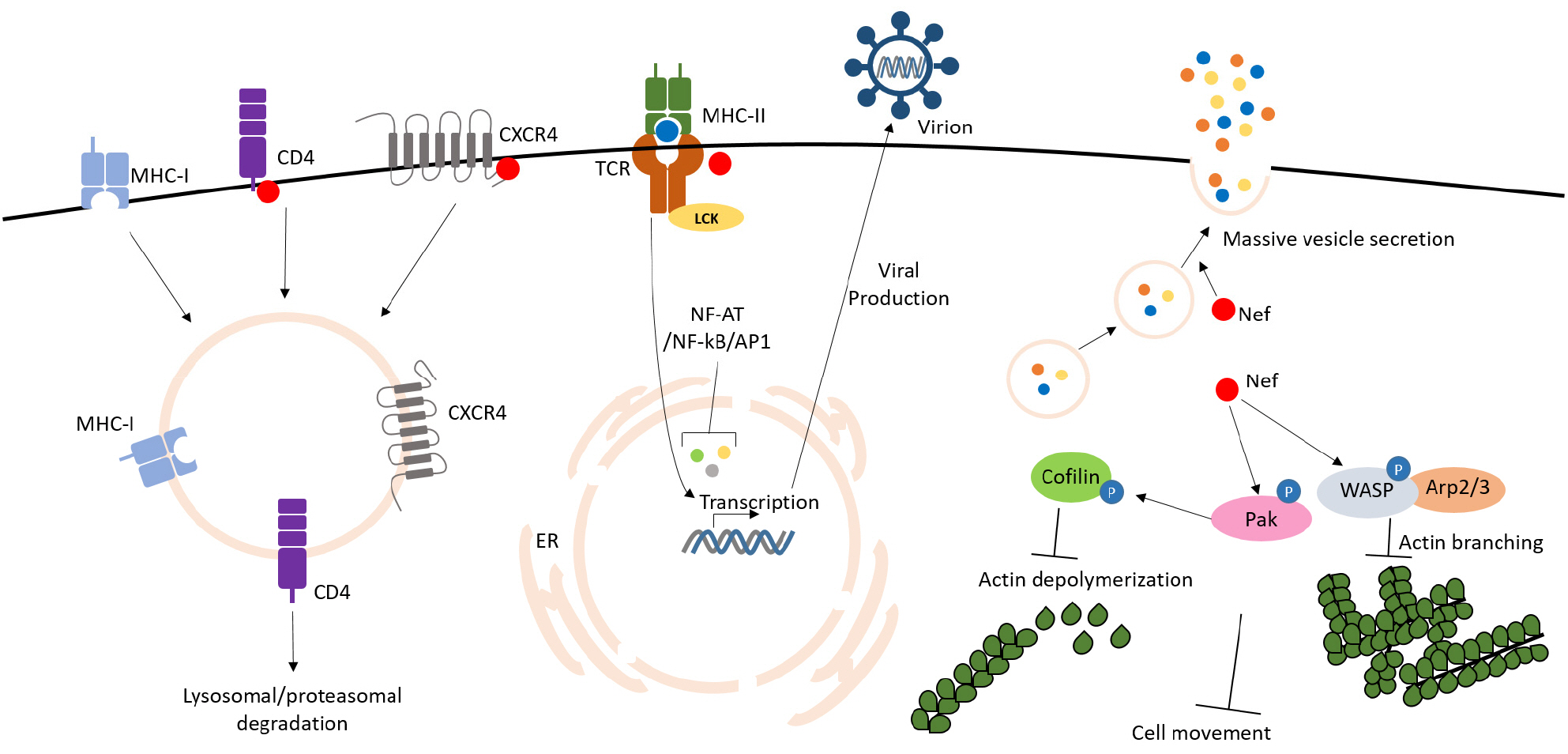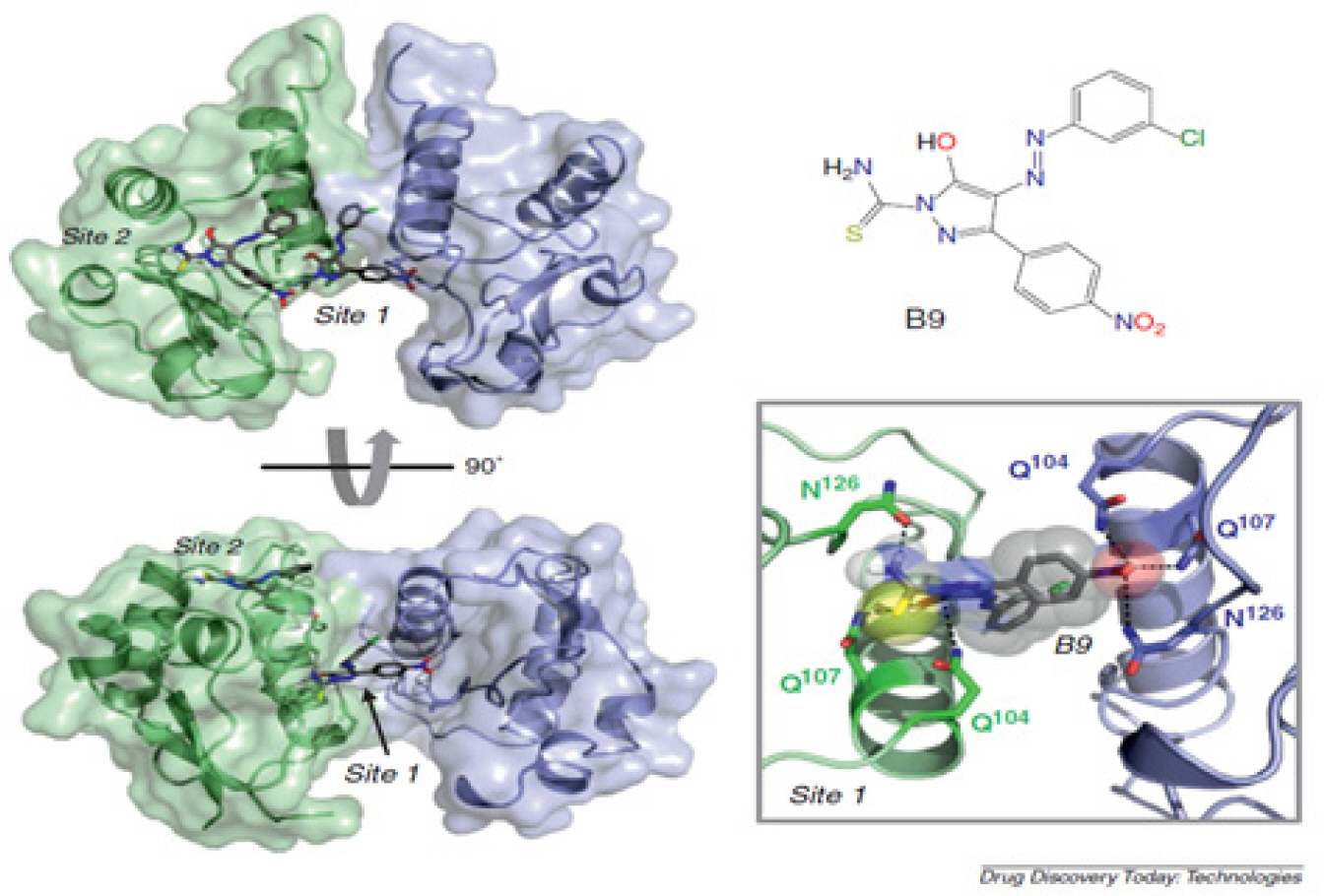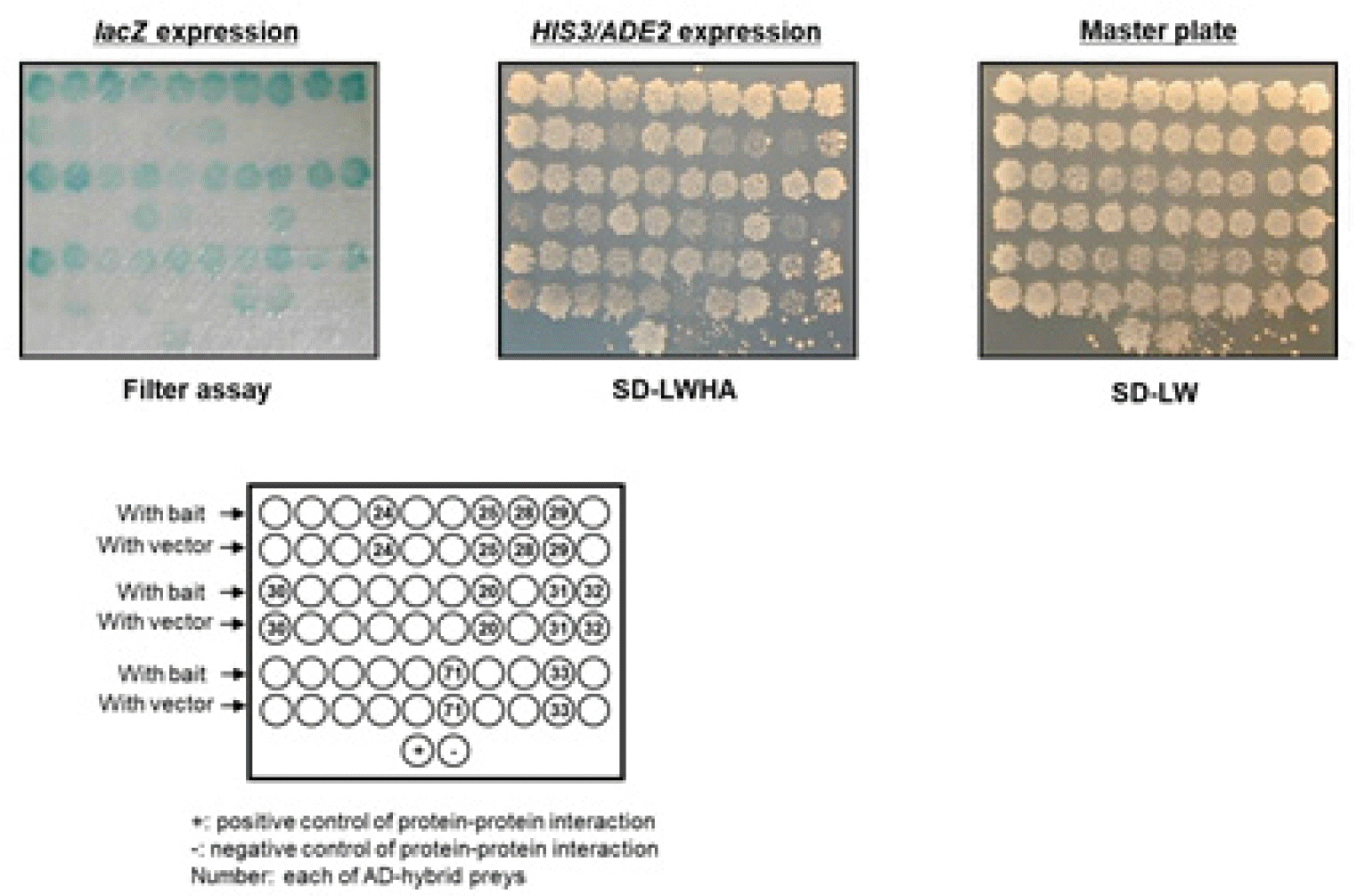J Bacteriol Virol.
2020 Sep;50(3):187-194. 10.4167/jbv.2020.50.3.187.
The HIV-1 Virulence Factor Nef as a New Therapeutic Target Against HIV/AIDS
- Affiliations
-
- 1Division of Viral Disease Research, Center for Infectious Disease Research, Korea National Institute of Health, Chungbuk 28159, Republic of Korea
- KMID: 2512138
- DOI: http://doi.org/10.4167/jbv.2020.50.3.187
Abstract
- Human immunodeficiency virus-1 (HIV-1) encodes an accessory protein Nef. Initially, Nef had been known as a viral negative factor due to its no-effect on viral replication in the cancerous cell line system, however the pivotal role of Nef in disease progression has been discovered in primary culture and in vivo studies. The Nef protein is 27-35kDa, which is N-myristolated to attach on the intracellular membrane. Since it is already known that the nef-deleted virus is associated with long-term non-progression (LTNP), the roles of Nef linked to viral virulence were emphasized to develop an agent capable of inhibiting the progression of acquired immunodeficiency syndrome (AIDS). Nef plays multifaceted roles in host cell activities, which are recognized as the key functions of Nef-induced AIDS progression. Nef down-regulates the surface expression of several immune proteins including CD4, major histocompatibility complex class I (MHC-I/II), CD3. CD62L CXCR4, etc. Also, Nef disturbs the actin dynamics linked to vesicle trafficking and cell movement, and modulates the T-cell activation signaling associated with viral transcription. Here, we overview the molecular mechanisms of Nef with regard to AIDS pathogenesis and discuss various therapeutic approaches targeting Nef with a view to developing a new class of anti-AIDS agent capable of preventing the disease progression linked to Nef-induced CD4 down-regulation and HIV-1 replication.
Keyword
Figure
Reference
-
1. Pereira EA, daSilva LLP. HIV-1 Nef: Taking Control of Protein Trafficking. Traffic 2016;17:976-96.DOI: 10.1111/tra.12412. PMID: 27161574.2. Deacon NJ, Tsykin A, Solomon A, Smith K, Ludford-Menting M, Hooker DJ, et al. Genomic structure of an attenuated quasi species of HIV-1 from a blood transfusion donor and recipients. Science 1995;270:988-91.DOI: 10.1126/science.270.5238.988. PMID: 7481804.3. Kirchhoff F, Greenough TC, Brettler DB, Sullivan JL, Desrosiers RC. Brief report: absence of intact nef sequences in a long-term survivor with nonprogressive HIV-1 infection. N Engl J Med 1995;332:228-32.DOI: 10.1056/NEJM199501263320405. PMID: 7808489.4. Gorry PR, McPhee DA, Verity E, Dyer WB, Wesselingh SL, Learmont J, et al. Pathogenicity and immunogenicity of attenuated, nef-deleted HIV-1 strains in vivo. Retrovirology 2007;4:66.DOI: 10.1186/1742-4690-4-66. PMID: 17888184. PMCID: PMC2075523.5. Kirchhoff F. Is the high virulence of HIV-1 an unfortunate coincidence of primate lentiviral evolution?. Nat Rev Microbiol 2009;7:467-76.DOI: 10.1038/nrmicro2111. PMID: 19305418.6. Foster JL, Garcia JV. HIV-1 Nef: at the crossroads. Retrovirology 2008;5:84.DOI: 10.1186/1742-4690-5-84. PMID: 18808677. PMCID: PMC2563024.7. Lindwasser OW, Smith WJ, Chaudhuri R, Yang P, Hurley JH, Bonifacino JS. A diacidic motif in human immunodeficiency virus type 1 Nef is a novel determinant of binding to AP-2. J Virol 2008;82:1166-74.DOI: 10.1128/JVI.01874-07. PMID: 18032517. PMCID: PMC2224420.8. Atkins KM, Thomas L, Youker RT, Harriff MJ, Pissani F, You H, et al. HIV-1 Nef binds PACS-2 to assemble a multikinase cascade that triggers major histocompatibility complex class I (MHC-I) down-regulation: analysis using short interfering RNA and knock-out mice. J Biol Chem 2008;283:11772-84.DOI: 10.1074/jbc.M707572200. PMID: 18296443. PMCID: PMC2431057.9. Giorgi JV, Hultin LE, McKeating JA, Johnson TD, Owens B, Jacobson LP, et al. Shorter survival in advanced human immunodeficiency virus type 1 infection is more closely associated with T lymphocyte activation than with plasma virus burden or virus chemokine coreceptor usage. J Infect Dis 1999;179:859-70.DOI: 10.1086/314660. PMID: 10068581.10. Swigut T, Greenberg M, Skowronski J. Cooperative interactions of simian immunodeficiency virus Nef, AP-2, and CD3-zeta mediate the selective induction of T-cell receptor-CD3 endocytosis. J Virol 2003;77:8116-26.DOI: 10.1128/JVI.77.14.8116-8126.2003. PMID: 12829850. PMCID: PMC161955.11. Stolp B, Reichman-Fried M, Abraham L, Pan X, Giese SI, Hannemann S, et al. HIV-1 Nef interferes with host cell motility by deregulation of Cofilin. Cell host Microbe 2009;6:174-86.DOI: 10.1016/j.chom.2009.06.004. PMID: 19683683.12. Stolp B, Imle A, Coelho FM, Hons M, Gorina R, Lyck R, et al. HIV-1 Nef interferes with T-lymphocyte circulation through confined environments in vivo. Proc Natl Acad Sci U S A 2012;109:18541-6.DOI: 10.1073/pnas.1204322109. PMID: 23093676. PMCID: PMC3494961.13. Muratori C, Cavallin LE, Krätzel K, Tinari A, De Milito A, Fais S, et al. Massive secretion by T cells is caused by HIV Nef in infected cells and by Nef transfer to bystander cells. Cell Host Microbe 2009;6:218-30.DOI: 10.1016/j.chom.2009.06.009. PMID: 19748464.14. Abraham L, Fackler OT. HIV-1 Nef: a multifaceted modulator of T cell receptor signaling. Cell Commun Signal 2012;10:39.DOI: 10.1186/1478-811X-10-39. PMID: 23227982. PMCID: PMC3534016.15. Rosa A, Chande A, Ziglio S, De Sanctis V, Bertorelli R, Goh SL, et al. HIV-1 Nef promotes infection by excluding SERINC5 from virion incorporation. Nature 2015;526:212-7.DOI: 10.1038/nature15399. PMID: 26416734. PMCID: PMC4861059.16. Vassena L, Giuliani E, Koppensteiner H, Bolduan S, Schindler M, Doria M. HIV-1 Nef and Vpu Interfere with L-Selectin (CD62L) Cell Surface Expression To Inhibit Adhesion and Signaling in Infected CD4+ T Lymphocytes. J Virol 2015;89:5687-700.DOI: 10.1128/JVI.00611-15. PMID: 25822027. PMCID: PMC4442509.17. El-Far M, Isabelle C, Chomont N, Bourbonnière M, Fonseca S, Ancuta P, et al. Down-regulation of CTLA-4 by HIV-1 Nef protein. PloS one 2013;8:e54295.DOI: 10.1371/journal.pone.0054295. PMID: 23372701. PMCID: PMC3553160.18. Smithgall TE, Thomas G. Small molecule inhibitors of the HIV-1 virulence factor, Nef. Drug Discov Today Technol 2013;10:e523-9.DOI: 10.1016/j.ddtec.2013.07.002. PMID: 24451644. PMCID: PMC3900877.
- Full Text Links
- Actions
-
Cited
- CITED
-
- Close
- Share
- Similar articles
-
- Clinical Guidelines for the Diagnosis and Treatment of HIV/AIDS in HIV-infected Koreans
- The 2013 Clinical Guidelines for the Diagnosis and Treatment of HIV/AIDS in HIV-Infected Koreans
- Experience of the Use of Three Screening Kits, Enzygnost Anti-HIV1/2 Plus, ABBOTT TESTPACK HIV- 1/HIV-2 & SERODIA. HIV- 1/2 for the Detection of Antibodies to HIV
- Recent update in HIV vaccine development
- HIV/AIDS Vaccine




